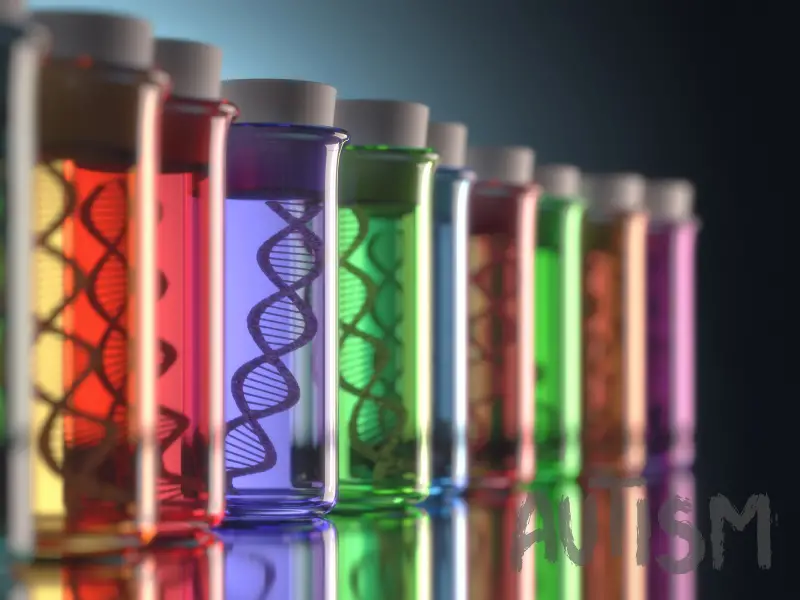Understanding the causes: Is Autism Genetic? Autism is a complex developmental disorder that affects millions of people worldwide. The diagnosis of autism is characterized by varying degrees of communication difficulties, social interaction challenges, and repetitive behaviors or interests. According to the Center for Disease Control and Prevention (CDC), the prevalence of autism has been increasing in recent years, with current estimates showing that one in 54 children in the US is diagnosed with autism.
Despite the growing awareness of autism and its associated challenges, the underlying causes of the disorder remain a topic of lively debate among scientists, researchers, and healthcare professionals. One perspective posits that autism is primarily a genetic disorder, while others point to environmental factors such as toxins or maternal stress.
In this article, we will explore the genetics of autism, looking at the evidence showing a genetic link to the disorder, the environmental factors that may contribute to its development, and the latest scientific advancements in understanding the genetics of autism.
Understanding Autism
Individuals with Autism Spectrum Disorder (ASD) often have difficulty understanding and interpreting non-verbal communication cues such as facial expressions and tone of voice, making social interactions challenging. Some may engage in repetitive or ritualistic behaviors, such as repeating phrases or organizing objects in a specific order. Many people with autism also exhibit a preoccupation with specific interests or topics.
Autism has a significant impact on individuals and their families. Communication difficulties can affect the quality of life of individuals with autism, and their caregivers must navigate a unique set of challenges when it comes to education, socialization, and healthcare.
Genetics and Autism
An accumulating body of research supports the hypothesis that genetics play a crucial role in the development of autism. Identical twin studies, for example, have revealed that if one twin has autism, there is a 70-90% chance that the other twin will also develop autism. This finding indicates that genetics plays a much more significant role in autism development than environmental factors. It is noteworthy that the other twin will not experience precisely the same genetic mutations as their affected sibling, suggesting that there might be complex interactions between environmental and genetic factors.
A study conducted by the Autism Genome Project estimated that 74-93% of autism cases are attributable to genetic factors. This project analyzed the DNA of more than 8,000 individuals with autism and 12,000 unaffected individuals. They found that several genes and chromosomal regions were associated with an increased risk of autism. However, up to 90% of autism-related genetic patterns are still not known.
Environmental Influences
Although genetics play a significant role in autism development, scientists have also identified several environmental factors that may contribute to autism’s onset. Some researchers propose that prenatal and perinatal exposures to toxins, infections, immune dysfunction, or maternal stress may influence the condition’s manifestation. A recent review of biological studies highlights the role of maternal stress and inflammation in the development of autism. Scientists exploring risk factors for autism have identified hormonal influences such as prenatal exposure to testosterone, maternal diabetes/metabolic disorders, and environmental factors (maternal prenatal smoking).
For example, a study of pregnant women in California found that women who lived within a mile of agricultural pesticide usage experienced a two-thirds increased risk of having a child with ASD. Another study published in the journal Environmental Health Perspectives showed that high levels of air pollution during pregnancy were associated with a higher risk of autism in offspring.
The role of environmental factors in autism’s development has been challenging to study, given the complexities of social interactions and communication skills that make up much of the disorder’s symptoms. Other confounding making this area a challenge to explore include the difficulty in quantifying exposure to environmental factors, the lack of biological markers of these exposures, and the inability to control for potential heritable aspects of environmental exposures.
Findings From Twin and Family Studies
Twin and family studies provide crucial clues about the genetic basis of complex disorders such as autism. Twin studies are essential in determining the heritability of a condition, which is the proportion of the variance of a trait that can be attributed to genetic factors. An identical twin study compares the concordance of ASD between monozygotic (identical) twins with dizygotic (fraternal) twins. Since monozygotic twins share 100% of their genetic material, and dizygotic twins share 50% of their genetic material, a higher concordance rate in monozygotic twins is suggestive of genetic factors’ significant involvement in the condition’s manifestation.
A meta-analysis of twin studies for the diagnosis of autism found that there was a 77% average concordance rate in monozygotic twins and 31% in dizygotic twins, indicating that genetics play a crucial role in autism’s development.
Genetic Risk Factors
The genetics of autism are a complex area, with a wide range of gene mutations and alterations found in individuals. Multiple genes have been identified as potentially associated with an increased risk of autism, including those associated with synaptogenesis, neural cell migration and differentiation, and regulation of the immune system.
Copy number variations (CNVs) are the most frequently studied type of genetic abnormality in autism.
The term CNV refers to gains and losses of specific portions of the genome. A 2018 study analyzed the DNA of more than 2,500 individuals with autism and over 4,000 individuals without the disorder. The study identified more than 100 CNVs associated with autism, with some CNVs appearing to increase the risk of autism considerably, such as deletions or duplications of chromosome 16p11.2.
The role of de novo genetic mutations in autism is another area of active study. De novo genetic mutations are those that occur spontaneously and are not inherited from a parent. They arise during cellular replication, particularly in the male germ cell line. These mutations are associated with a significantly increased risk for autism spectrum disorders and other neurodevelopmental conditions.
Current Research and Future Directions
Research on the genetics of autism is continually progressing, with the goal of uncovering new risk factors and genetic pathways associated with the development of the disorder. An influential area of investigation for scientists looking into autism genetics is potentially significant gene-gene interactions and specific environmental exposures.
Several examples illustrate the potential for future exploration. A study by Liu and colleagues investigated the connections between intestinal inflammation during pregnancy and autism development. They revealed, in mice, that maternal antibiotic usage leads to induced intestinal inflammation, which also contributes to deficits in social behavior and the development of ASD-like phenotypes in male offspring. In another example, a study focused on GABA (gamma-aminobutyric acid) mediated inhibitory mechanisms indicated that the dysregulation of mechanisms as such may play vital roles in autism pathology. Consequently, this suggests the potential for a new therapeutic avenue for autism affecting this neurotransmitter’s function in affected individuals.
FAQs
One of the most common questions about autism is whether it is genetic. The answer is not straightforward, as autism is influenced by a combination of genetic and environmental factors. Below, we delve into the genetics of autism, including how it is inherited, the types of genetic factors involved, and the latest research findings.
1. Is Autism Genetic?
Yes, autism has a strong genetic component. Research shows that genetics play a significant role in the development of autism, with heritability estimates ranging from 50% to 90%. This means that genetic factors account for a substantial portion of the risk for developing autism. However, autism is not caused by a single gene but rather by a complex interplay of multiple genes and environmental factors.
2. How Is Autism Inherited?
Autism is a polygenic disorder, meaning it involves multiple genes. The inheritance pattern is complex and does not follow simple Mendelian rules (e.g., dominant or recessive inheritance). Below are key points about how autism is inherited:
Familial Patterns
- Sibling Risk: If one child in a family has autism, the risk of a sibling also having autism is approximately 10–20%, which is significantly higher than the general population risk of about 1–2%.
- Twin Studies: Studies of identical twins (who share 100% of their genes) show that if one twin has autism, the other has a 60–90% chance of also having autism. In fraternal twins (who share about 50% of their genes), the concordance rate drops to 0–30%, highlighting the strong genetic influence.
Multifactorial Inheritance
- Autism is considered a multifactorial condition, meaning it results from the interaction of multiple genetic and environmental factors. While genetics play a major role, environmental influences (e.g., prenatal exposure to certain chemicals, advanced parental age) can also contribute to the risk.
3. What Types of Genetic Factors Are Involved in Autism?
The genetic architecture of autism is highly complex and involves several types of genetic variations. Below are the main categories of genetic factors associated with autism:
1. Common Genetic Variants
- These are small changes in DNA sequence that are relatively common in the general population. Individually, they have a small effect on autism risk, but when combined, they can significantly increase the likelihood of developing autism.
- Examples include single nucleotide polymorphisms (SNPs), which are variations at a single position in the DNA sequence.
2. Rare Genetic Variants
- These are less common genetic changes that have a larger impact on autism risk. They include:
- Copy Number Variations (CNVs): Deletions or duplications of large segments of DNA. For example, deletions in the 16p11.2 or 22q11.2 regions are associated with autism.
- De Novo Mutations: Spontaneous mutations that occur in the egg, sperm, or early embryo and are not inherited from either parent. These mutations are more common in individuals with autism, especially those with no family history of the condition.
3. Syndromic Autism
- Some genetic syndromes are strongly associated with autism. These syndromes are caused by mutations in a single gene and often have additional physical or developmental features. Examples include:
- Fragile X Syndrome: Caused by a mutation in the FMR1 gene, it is the most common single-gene cause of autism.
- Rett Syndrome: Caused by mutations in the MECP2 gene, primarily affecting females.
- Tuberous Sclerosis: Caused by mutations in the TSC1 or TSC2 genes, often accompanied by seizures and skin abnormalities.
4. Polygenic Risk Scores
- Polygenic risk scores (PRS) are a way to estimate an individual’s genetic risk for autism based on the combined effect of many common genetic variants. While PRS can provide insights into genetic predisposition, they are not yet precise enough for diagnostic use.
4. What Genes Are Associated with Autism?
Over 100 genes have been strongly linked to autism, and hundreds more are under investigation. These genes are involved in various biological processes, including:
Synaptic Function
- Many autism-related genes are involved in the development and function of synapses, the connections between neurons. Examples include:
- SHANK3: Plays a role in the structure and function of synapses.
- NLGN3 and NLGN4: Involved in the formation of synaptic connections.
Chromatin Remodeling
- Some genes associated with autism are involved in chromatin remodeling, which regulates how DNA is packaged and accessed. Examples include:
- CHD8: A gene involved in chromatin remodeling and gene expression.
Neuronal Communication
- Genes involved in neuronal communication and signaling pathways are also implicated in autism. Examples include:
- SCN2A: A gene that encodes a sodium channel critical for neuronal signaling.
5. How Do Environmental Factors Interact with Genetics?
While genetics play a major role in autism, environmental factors can also contribute to the risk. These factors do not cause autism on their own but may interact with genetic predispositions to increase the likelihood of developing the condition. Examples of environmental factors include:
Prenatal Factors
- Advanced Parental Age: Older parents (especially fathers) are more likely to have children with autism, possibly due to an increased risk of de novo mutations.
- Maternal Health: Conditions like diabetes, obesity, or infections during pregnancy may increase the risk.
- Exposure to Certain Chemicals: Prenatal exposure to substances like valproic acid (an anti-seizure medication) or air pollution has been linked to a higher risk of autism.
Perinatal Factors
- Complications During Birth: Low birth weight, preterm birth, or oxygen deprivation during delivery may increase the risk of autism.
Postnatal Factors
- Early Life Infections: Severe infections or immune system dysregulation in early childhood may contribute to autism risk in genetically predisposed individuals.
6. Can Genetic Testing Identify Autism Risk?
Genetic testing can identify some of the genetic variants associated with autism, but it is not definitive. Below are the types of genetic tests available:
Chromosomal Microarray Analysis (CMA)
- Detects large deletions or duplications in DNA, such as CNVs, which are associated with autism.
Whole Exome Sequencing (WES)
- Analyzes the protein-coding regions of genes to identify rare mutations, including de novo mutations.
Fragile X Testing
- Specifically tests for mutations in the FMR1 gene, which causes Fragile X Syndrome.
Limitations of Genetic Testing
- Genetic testing can identify known autism-related mutations, but it cannot predict autism with certainty. Many individuals with autism do not have identifiable genetic mutations, and not all individuals with autism-related mutations will develop the condition.
7. What Does the Future Hold for Genetic Research in Autism?
Genetic research in autism is rapidly advancing, with several promising areas of focus:
Precision Medicine
- Understanding the genetic basis of autism could lead to personalized treatments tailored to an individual’s specific genetic profile.
Gene Therapy
- Emerging technologies like CRISPR-Cas9 offer the potential to correct or modify autism-related genetic mutations.
Early Intervention
- Identifying genetic risk factors early could enable earlier diagnosis and intervention, improving outcomes for individuals with autism.
The genetics of autism remain a multifaceted and active area of research for scientists worldwide. Genetic factors profoundly impact autism development, with studies revealing multiple genes, genetic changes, and copy number variations associated with an increased risk of the disorder. However, researchers broadly acknowledge that environmental exposures such as maternal inflammation and toxin exposures may interact with genetics to influence the likelihood and manifestation of autism.
The study of the genetics of autism is essential to better understand and treat the disorder. The ongoing research is generating new insights and uncovering novel genetic targets for potential personalized treatments and therapies. It is, therefore, crucial that further investigations exploring the complex interplay between genetics and environmental factors continue.
Overall,the current scientific evidence supporting this assertion indicates that genetics plays a vital role in ASD development. Studying ASD genetics is and will be paramount in the discovery of underlying mechanisms and new therapies for the many individuals affected by the condition.
Key Takeaways
- Autism is a genetically complex disorder influenced by multiple genes and environmental factors.
- While heritability is high, no single gene causes autism. Instead, it results from the combined effects of common and rare genetic variants.
- Genetic testing can identify some autism-related mutations but is not definitive for diagnosis.
- Ongoing research aims to uncover the genetic mechanisms underlying autism and develop targeted treatments.



